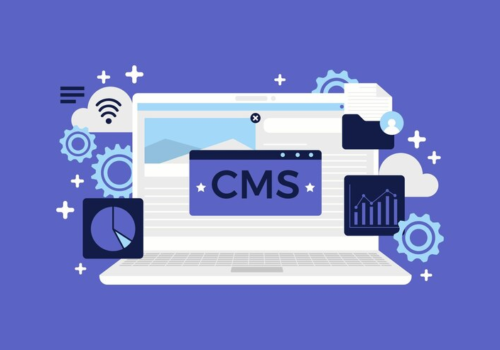Efficient Methods for Replicating a WordPress Site
In the digital landscape, the necessity to migrate or replicate a WordPress platform without server access is a common yet challenging task. This comprehensive guide delves into the intricacies of such scenarios, exploring viable solutions for those lacking conventional access information.
Whether due to lost contact with previous developers, insufficient technical knowledge from clients, or uncooperative hosting services, this article provides in-depth insights and techniques to navigate these hurdles effectively.
How We Find Ourselves Migrating a Site That We Don’t Have Server Access To
1. Client Doesn’t Have the Information
The challenge of migrating a website without proper access credentials is prevalent. Such situations arise when employees who initially set up the hosting leave the organization, often taking vital information with them. In some instances, hosting accounts are personally tied to these individuals, complicating the recovery process.
Another frequent scenario involves external contractors, like freelancers or now-defunct companies, who originally established the hosting and are no longer contactable. This leaves organizations in a predicament, requiring alternative methods for website migration.
2. The Client Just Doesn’t Understand What We Are Asking For
Technical terminologies like MySQL, phpMyAdmin, SFTP, SSH, etc., can be daunting for clients. In cases where clients are unable to provide this information, and no control panels like cPanel are accessible, the complexity increases. Our role involves simplifying these concepts and finding workarounds when such technical details are beyond the client’s understanding or reach.
3. The Previous Host or Developer Will Not Give Us Access
Instances where previous developers or hosting services deny access are particularly challenging. While we uphold ethical standards and encourage clients to resolve any outstanding issues, such as unpaid bills, there are times when the relationship with the former service provider has soured. In these cases, non-cooperative parties hinder the migration process, making it necessary to explore alternative routes for site replication without traditional FTP or MySQL access.
How Do I Copy a WordPress Website Without Access?
To initiate the replication process, one fundamental requirement is gaining administrator access to the WordPress backend. This level of access is crucial for installing essential plugins that facilitate the migration.
However, it’s important to note that attempting migration without file, database, and administrator access would border on unauthorized access. Therefore, securing full administrator privileges is a prerequisite for a legitimate and ethical migration process.
Utilizing Backup Plugins
Backup plugins play a pivotal role in replicating websites. They enable the creation of complete website copies, encompassing both databases and files. Users have the option to either download these backups directly or transfer them to cloud services like Dropbox. However, there are considerations to bear in mind:
- Server Resources: The hosting server must possess adequate resources, primarily storage, to accommodate the backup process. Given the potential size of backups, this factor is crucial, especially in shared hosting environments;
- Excluding Files: To optimize the backup process, certain files can be excluded, such as previous backups, log files, and zip files, to conserve space and enhance efficiency;
- Handling Failures: In cases where backups fail due to server timeouts or missing modules, trying different settings, like adjusting compression, can be effective.
Recommended Backup Plugins:
- UpdraftPlus: Known for its user-friendly interface and comprehensive backup options;
- Duplicator Plugin: Offers a straightforward package for transferring sites, although it may encounter conflicts more frequently than other plugins;
- VaultPress (Jetpack Backup): A robust option for continuous backup and security scanning;
- BackWPup: An all-time favorite for its versatility and compatibility with various storage solutions.
Among these, BackWPup stands out for its free version and ability to seamlessly back up both files and databases to multiple storage solutions. It creates a standard zip file and SQL database, compatible with most hosting environments.
Duplicator, while occasionally encountering conflicts, provides an installer file that simplifies migration on new hosts. In case of installer failures, manual installation of files and databases remains a viable option.
By leveraging these tools and approaches, migrating a WordPress platform without conventional access becomes a manageable task, ensuring continuity and minimal disruption.
Use a Migration Plugin
In recent years, migration plugins have emerged as a highly effective solution for transferring a website to a new hosting environment, especially in scenarios where FTP or MySQL access is unavailable. This method hinges on the initial setup of a new web host and the installation of a fresh WordPress instance.
The process involves gaining administrative access to both the original and new platforms. Subsequently, a migration plugin is installed on each. During the setup phase, you will need to specify details about the content to be transferred. The steps typically involve:
- Installing the Migration Plugin: Install the chosen migration plugin on both the original and new WordPress instances;
- Configuration: Configure the plugin by inputting information about the source website and specifying the content that needs to be transferred;
- Initiating Transfer: After configuration, start the transfer process with a simple command or click within the plugin interface.
One of the key advantages of using these plugins is their ability to handle serialized data. They efficiently manage the search and replace operations on serialized data, ensuring that links, paths, and other serialized values are correctly updated to match the new environment.
While many web hosting services offer proprietary solutions and plugins for migration, the following are two widely recognized and reliable options:
- Migrate Guru: Known for its ease of use and ability to handle large websites without server overload;
- All-in-One WP Migration: Praised for its intuitive interface and compatibility with various hosting providers.
Manual Migration Techniques
For situations where plugins may not be a viable option, manual migration techniques are an alternative approach. These methods require a more hands-on approach and understanding of WordPress’s structure. The key steps include:
- Manual Database Export: Access the WordPress database via tools like phpMyAdmin and export the SQL file;
- File Transfer: Manually download the WordPress files, including the wp-content folder, via SFTP;
- Database Import and Configuration: Import the database SQL file into the new hosting environment and update the wp-config.php file with the new database details.
Precautions and Best Practices
When migrating a website without standard access, certain precautions and best practices are crucial:
Data Backup: Before initiating any migration process, ensure that you have a complete backup of the website.
Testing the Migration: Perform thorough checks on the new environment to ensure all data is accurately migrated and functional.
SEO Considerations: Monitor for any potential impacts on search engine rankings and implement necessary redirections or adjustments.
Security: Ensure all login credentials and access points are secure in the new environment to prevent unauthorized access.
Conclusion
Migrating a WordPress website without traditional access requires a nuanced approach, incorporating both technical expertise and strategic planning. From leveraging advanced migration plugins to manual migration techniques, the methods vary based on the specific challenges and constraints faced.
Understanding the underlying principles of WordPress, ensuring data integrity, and adhering to best practices for security and SEO are paramount throughout this process. This comprehensive guide serves as a valuable resource, offering insights and practical solutions for effectively handling such migrations, thereby ensuring a smooth and successful transition to a new hosting environment.





